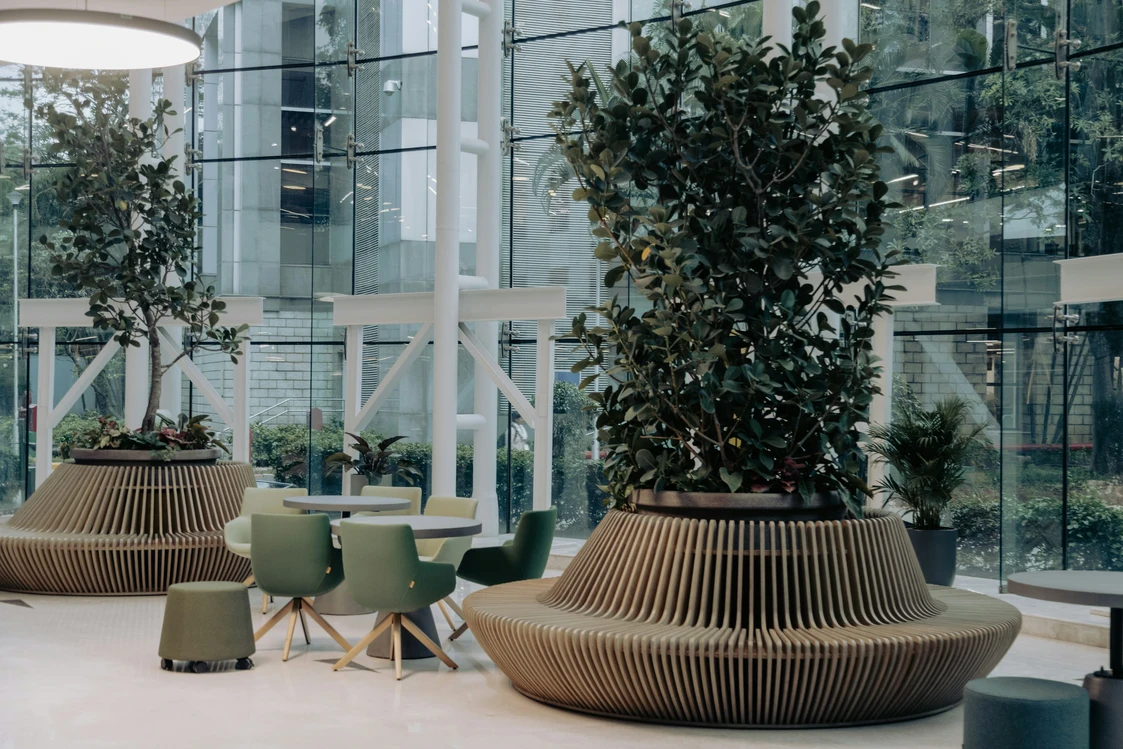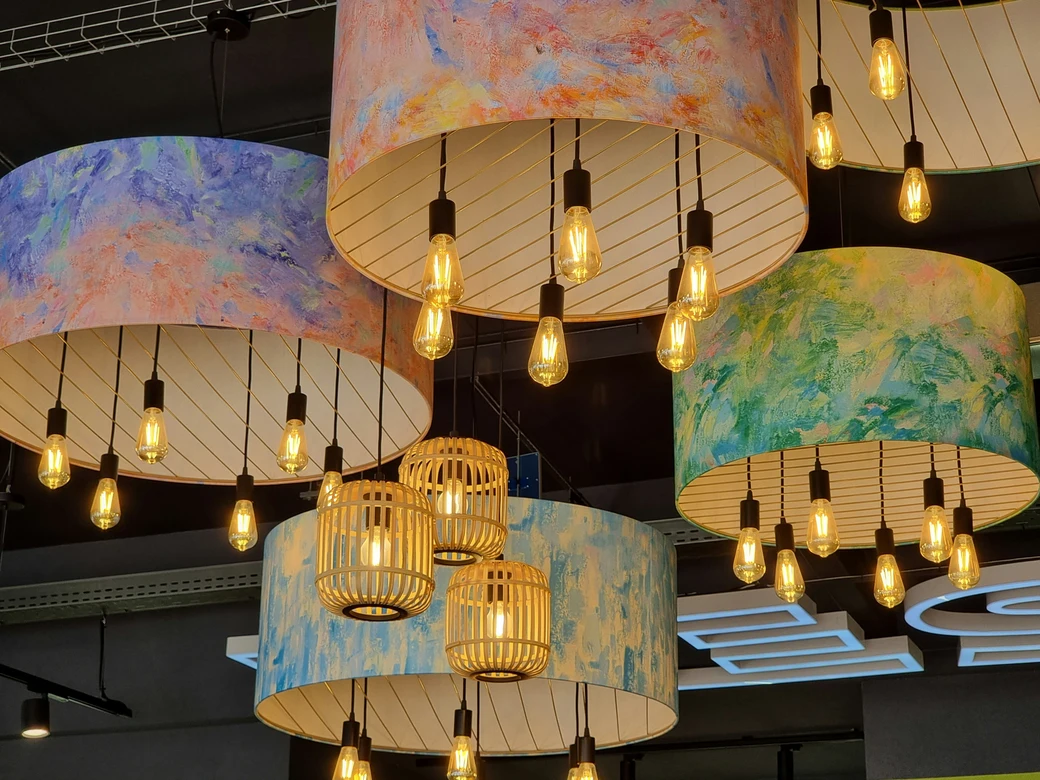Biophilic design has become one of the most exciting movements in modern interiors, and it’s not just about adding plants. At its core, biophilic design is the practice of incorporating natural elements into built environments to improve well-being, productivity, and overall comfort. While many people love the idea of filling their homes with greenery, the thought of constant watering, pruning, and replacing wilted leaves can feel overwhelming. That’s where biophilic design: bringing the outdoors in without high maintenance comes in.
You don’t need to turn your home into a greenhouse to enjoy the benefits of nature-inspired interiors. With the right materials, textures, colors, and design techniques, you can create a calming, nature-connected space that requires little to no upkeep. Let’s explore how to bring the outdoors in, effortlessly.

Why Biophilic Design Matters in Everyday Living
Humans have an innate need to connect with nature, known as “biophilia.” Studies have shown that natural elements indoors can reduce stress, improve mood, boost productivity, and even support better sleep. In cities and compact living environments where greenery is scarce, biophilic design becomes an essential strategy for creating balance and calm.
The challenge is finding low-maintenance ways to enjoy nature indoors without committing to daily plant care. Fortunately, biophilic design doesn’t always mean live plants—it also means nature-inspired colors, organic materials, patterns, and even technology-driven solutions.
1. Use Natural Light as a Design Element
One of the easiest ways to embrace biophilic design: bringing the outdoors in without high maintenance is to maximize natural light. Sunlight not only brightens your home but also regulates circadian rhythms, boosts energy, and supports mental health.
Simple strategies include:
- Installing sheer curtains to diffuse light without blocking it.
- Using mirrors to reflect daylight deeper into rooms.
- Choosing open shelving instead of bulky cabinets near windows.
Natural light doesn’t require upkeep and instantly creates a connection to the outdoors.

2. Incorporate Nature-Inspired Colors
Color psychology plays a powerful role in how we perceive space. Shades of green evoke growth and calm, blues bring serenity, and earthy tones create grounding warmth. Instead of filling your home with plants, paint walls in calming moss green, use sky-blue upholstery, or add rust-toned accents.
This low-maintenance approach to biophilic design means you capture the essence of nature without relying on constant upkeep.
3. Bring in Natural Materials
Materials such as wood, stone, bamboo, linen, and rattan immediately add a tactile, organic quality to interiors. Unlike live plants, these require zero maintenance but still reinforce nature’s presence indoors.
Examples include:
- A wooden coffee table with a raw edge.
- A stone backsplash in the kitchen.
- Linen curtains or cotton throws.
These textures add warmth and depth, making a home feel more connected to the natural world.
4. Add Greenery Without Live Plants
If the thought of watering schedules and dead leaves stresses you out, you can still enjoy the look of greenery without the work. Options include:
- High-quality faux plants – Modern versions are almost indistinguishable from the real thing.
- Preserved moss walls – These require no watering but provide a lush, natural appearance.
- Botanical prints or artwork – Framed leaves, floral patterns, or abstract green art pieces evoke the outdoors.
This way, biophilic design becomes a lifestyle choice, not a chore.
5. Embrace Water-Inspired Design
Water is one of the most calming natural elements, and incorporating it doesn’t have to mean a complex fountain. Consider subtle references like glass surfaces that mimic water reflections, blue accent rugs, or artwork inspired by waves.
For those who want an actual feature, tabletop fountains or wall-mounted water panels can create soothing sounds while requiring minimal maintenance.
6. Use Organic Shapes and Patterns
Nature rarely works in straight lines, so incorporating organic curves and flowing patterns into your home design can mimic the natural world. Rounded furniture edges, wavy décor patterns, or even rugs with pebble-like textures enhance biophilic design without extra care.
This design trick subtly relaxes the mind, reminding you of landscapes and natural movement.
7. Integrate Smart Tech for Biophilic Benefits
Technology now plays a surprising role in biophilic design: bringing the outdoors in without high maintenance. Smart lighting systems can mimic sunrise and sunset patterns, helping regulate your natural body clock. Digital picture frames can display rotating nature scenes, while sound machines can bring the soothing background of birdsong or ocean waves into your home.
This combination of tech and design gives you the psychological benefits of nature without the need for live plants or constant upkeep.

The Benefits of Low-Maintenance Biophilic Design
Incorporating biophilic design without high maintenance offers several key advantages:
- Stress Reduction – Even simulated natural elements lower anxiety.
- Better Productivity – Nature-inspired interiors support focus and creativity.
- Improved Mood – Spaces feel more uplifting and energizing.
- Timeless Aesthetics – Unlike fleeting décor trends, natural influences are always relevant.
- Minimal Effort – Enjoy the perks of nature without worrying about plant care.
FAQs (Frequently Asked Questions) About Biophilic Design: Bringing the Outdoors In Without High Maintenance
1. Do I need live plants to create a biophilic design?
Not at all. While plants are popular, you can achieve the same benefits with natural materials, colors, and patterns that don’t require care.
2. What’s the easiest way to add biophilic design to my home?
Start with natural light and nature-inspired colors. These are low-cost, low-maintenance, and make a big visual impact.
3. Can biophilic design work in small apartments?
Yes. Even small touches like wood accents, botanical prints, or soft, nature-inspired textures create the same calming effect in compact spaces.
4. Is faux greenery considered part of biophilic design?
Yes, especially high-quality faux or preserved plants. They visually connect you to nature while eliminating the burden of care.
5. Does biophilic design improve health?
Research suggests that biophilic elements can reduce stress, boost mood, and even support better sleep, making it a valuable investment for mental well-being.
Want More Blogs Like These?
Check out more design inspiration in Living Spaces on Designs24hr.







